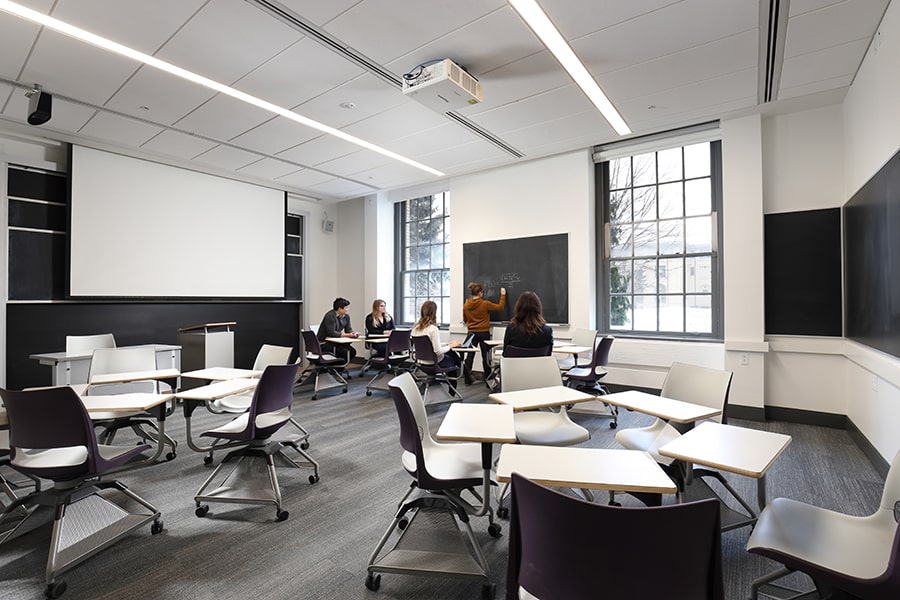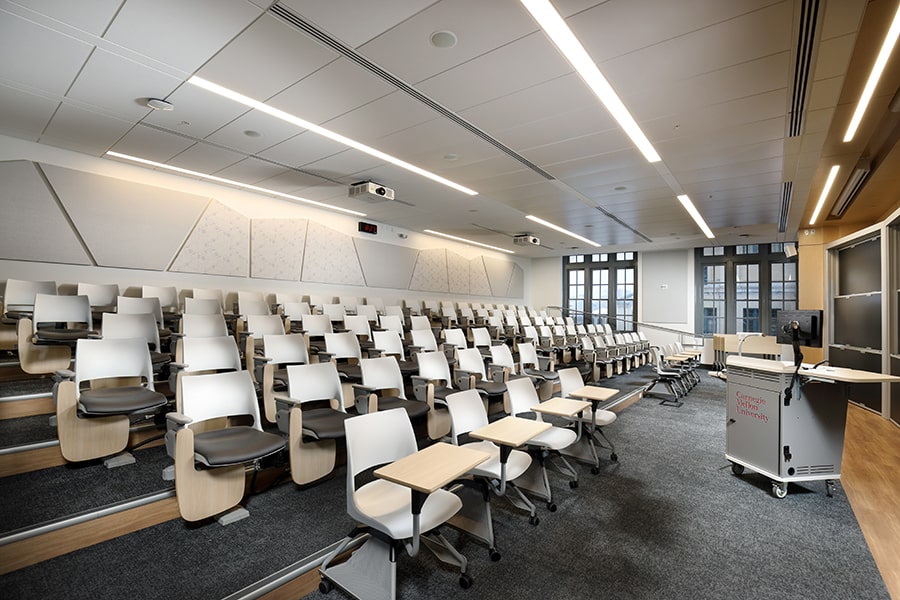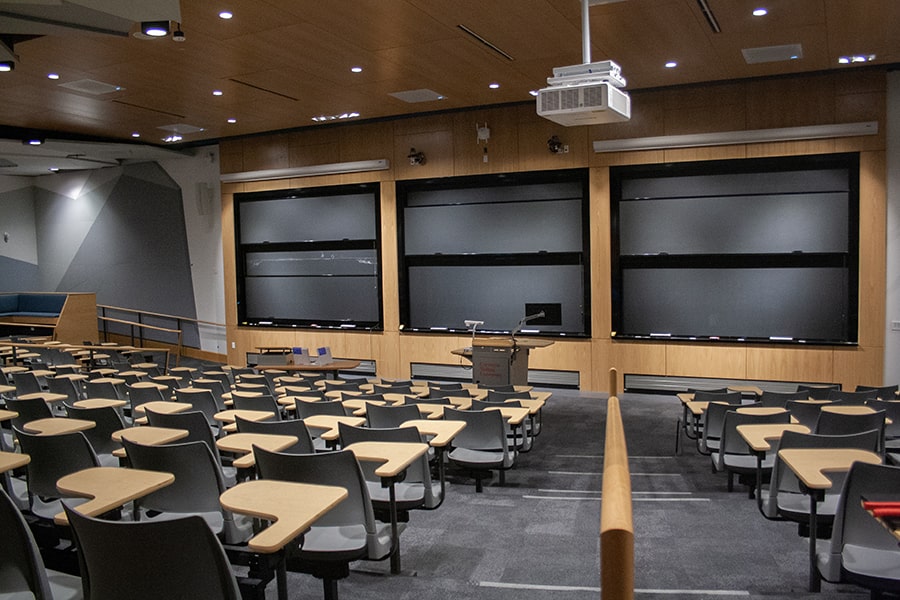Classroom Renovations Put Focus on Active Learning
By Bruce Gerson
Carnegie Mellon’s classroom and learning spaces renovation project is on time, on budget and receiving rave reviews.
Launched in July 2017, the 3.5-year, $20 million project has completed 37 of the 78 classrooms targeted for improvement following a detailed assessment by faculty and staff on the Learning Spaces Committee.
Improvements have been made in lighting, acoustics, sight lines, and heating and cooling — more than 90 percent of CMU’s classrooms now have air conditioning. New flexible seating and furnishings to promote student collaboration, new monitors and whiteboards, and state-of-the-art digital instructional technology have been added. Increasing classroom accessibility also has been a priority.
Marsha Lovett, associate vice provost for Teaching Innovation and Learning Analytics, said she has been impressed with the work.
“The renovated classrooms are designed to center on the learner and to promote active learning,” said Lovett, director of the Eberly Center for Teaching Excellence & Educational Innovation. “We also are aiming for the renovated rooms to be flexible and to accommodate multiple teaching and learning formats.”
To encourage group learning, efforts were made to give students more room.
“Where possible, we are trying to give students more space and create flexibility in the seating so students can be more active in the classrooms and more easily work in groups,” said Jennifer McDowell, director of Design and Construction for Campus Design and Facility Development. “Many of the renovated rooms have chairs on casters that can roll and swivel, and have larger tablet arms. Some have cup holders and a place where students can put their bookbag. That’s the new standard.”
McDowell said many power outlets have been incorporated into or nearby the seating areas so students can plug in their laptops, phones and other devices when needed.
"Where possible, we are trying to give students more space and create flexibility in the seating so students can be more active in the classrooms and more easily work in groups.” — Jennifer McDowell, Campus Design and Facility Development
Four of the larger structural renovation projects have been the Adamson Wing in Baker Hall, Breed Hall in Margaret Morrison Carnegie Hall, combining 1217 and 1211 Doherty Hall into one active distance learning classroom, and fully revamping the 1212 lecture hall in Doherty. The Cooper and Simon auditoriums in GSIA also were converted into one large tiered classroom — GSIA 160 — that seats 184.
The Adamson Wing was gutted and beautifully redone with new LED lighting and carpeting, chairs that roll and swivel, benches, whiteboards placed around the room and an audio-visual room with new technology. Two sump-pumps were replaced to alleviate the flooding problems that often occurred after a heavy rainfall
History Professor Scott Sandage called the Adamson Wing overhaul “spectacular.” “I can’t wait to teach there,” he said.
Lovett lauded the multiple monitors and whiteboards around the room.
“This way, each group can learn as they co-create solutions on their dedicated monitor or board amidst the support of peers and the instructor,” she said.
Breed Hall also received a total makeover with new swivel seating and movable furnishings, new carpeting and flooring, LED lighting, whiteboards, blackboards and new technology.
“Our shining stars have been our active learning halls and auditoriums, like Breed Hall, Doherty 1212 and GSIA 160,” University Registrar John Papinchak said.
The 37 renovated classrooms to date include 19 in Porter Hall that were completed in 2017; 10 in Doherty, Wean and Baker halls that were back online for fall 2018; and eight in Doherty, Wean, Margaret Morrison and GSIA that returned to use this semester.
This spring and summer more than a dozen classrooms in Posner, Hamerschlag, Doherty, Porter and Wean are on the schedule.
Co-chaired by Lovett and Keith Webster, dean of University Libraries, the Learning Spaces Committee rated more than 100 classrooms based on their design for active learning, environmental quality, furnishings and technology. Rooms deemed to be below average were put on the renovation list.
“Our shining stars have been our active learning halls and auditoriums, like Breed Hall, Doherty 1212 and GSIA 160.” — University Registrar John Papinchak
McDowell and Papinchak said all 37 renovated classrooms to date are now in good standing based on the Educause Ratings Scale used by the Learning Spaces Committee. McDowell said she has been receiving “wonderful feedback” on the work. Papinchak agreed.
“Our focus to renovate, innovate and sustain has received great support from senior leadership and the deans. Faculty from across the campus have been greatly appreciative of the improvements made in our learning spaces,” Papinchak said.
For more information and to follow the project’s progress visit the Enrollment Services website.



